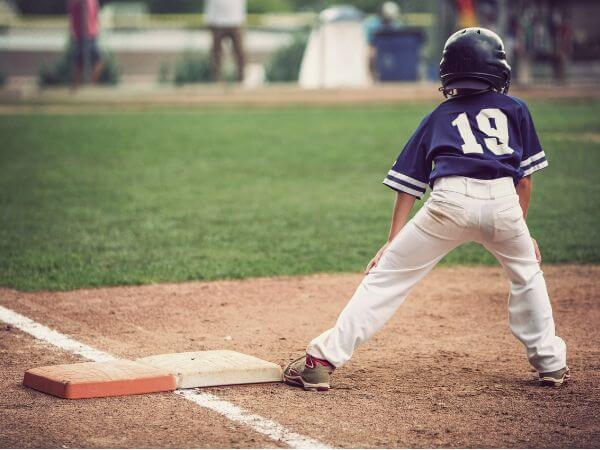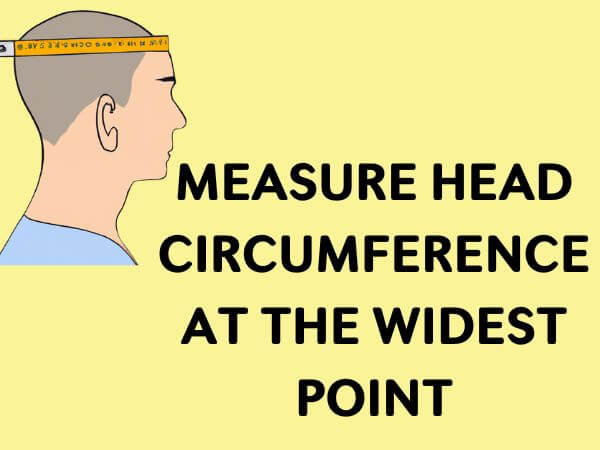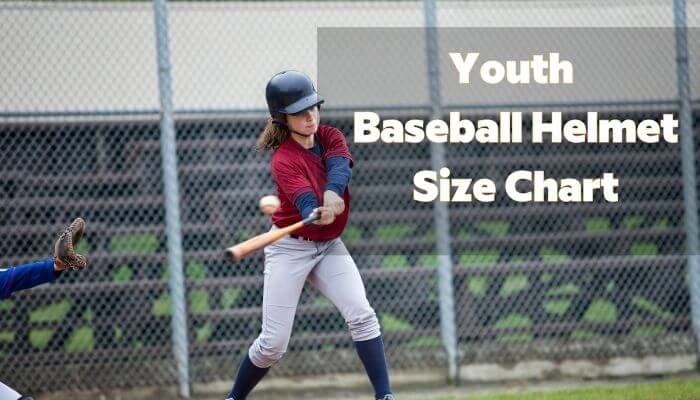Young baseball players, their parents, and their coaches should always put safety first. And the proper baseball helmet is the first concern when talking about safety on the field. As well as the correct dimensions. Young baseball players, therefore, need to be familiar with the youth baseball size chart before making a purchase.
I’ll do some additional research on the topic so you can choose the best youth baseball helmet for your needs.
Types of Youth Baseball Helmets

Traditional Helmets
First up we have the traditional helmets. These are the helmets you usually see players wearing. They cover the top, back, and sides of your head. They’re made of hard plastic on the outside and have squishy foam inside to soak up any bumps. You can adjust them with a chin strap to make sure they stay snugly on your head.
Batting Helmets
You’ll need a baseball helmet when it’s your turn to step up to the plate. These helmets are made for hitters like you in particular. Not only do they protect your head, but they also protect parts of your face, like your cheeks and temples. A mask made of strong metal or tough plastic is built into batting caps to protect your face from stray balls or accidental hits. Also, they are light and have small holes that let air in and keep you feeling cool.
Catcher’s Helmets
Now, the keeper knows that he or she is in a dangerous position. Catcher’s helmets are made just for you brave folks behind the plate. They give you more security since catchers are more likely to get hit by balls or bats. All of your head is covered by these helmets, including your face, temples, and throat. First things first, right?
Youth Baseball Helmet Size Chart
To find the right helmet size, I’ve prepared a simple and easy-to-understand youth baseball helmet size chart for you. Take note of the following age ranges and corresponding head circumference measurements:
Age Range: 5-7 years old
Head Circumference: 19-20.5 inches (48-52 cm)
Age Range: 8-10 years old
Head Circumference: 20.5-22 inches (52-56 cm)
Age Range: 11+ years old
Head Circumference: 22-23.5 inches (56-60 cm)
Here are more details so that you can buy a proper helmet
| Age Range | Head Circumference (inches) | Head Circumference (cm) | Hat Size |
| 5-7 years | 19-20.5 | 48-52 | 6-6 3/8 |
| 8-10 years | 20.5-22 | 52-56 | 6 3/8-7 |
| 11+ years | 22-23.5 | 56-60 | 7-7 1/2 |
Why Does Helmet Size Matter?
A helmet that fits well can make it much less likely that a player will get a head injury or concussion from a flying ball। Moreover, it reduces the risk of injury happening from a clash with another player.
When a helmet is too loose, it can move around or fall off easily during play, putting the player’s head in danger. On the other hand, a too-tight helmet can be uncomfortable and make it hard to pay attention to the game.
A helmet that fits right should sit tight on top of the player’s head, with no gaps between the face and the front of the helmet. The chin strap should also fit easily under the chin while keeping the helmet in place.
Before each game and practice, coaches and parents should make sure that each player has a helmet that fits well. One blow is all it takes to do major damage that could have been avoided with well-fitted protective gear.
Wearing a youth baseball helmet that fits properly is one of the most important things parents and coaches can do to keep their young players safe.
How to Measure for a Youth Baseball Helmet

The first step is to measure your child’s head circumference at the widest point, which is an inch or so above the child’s eyebrows and ears, using a flexible measuring tape. Take care not to overtighten or under tighten the tape.
After determining your child’s head circumference, consult a reputable brand’s kid baseball helmet size chart. It’s important to double-check the brand’s size recommendations before making a purchase because they may vary somewhat based on how the product is constructed.
Tips for Buying a Properly Fitting Helmet
First and foremost, always measure your child’s head before purchasing a helmet. This will ensure that you get the correct size and avoid any discomfort or safety issues.
It’s also important to consider the type of helmet your child needs. There are different options available such as traditional helmets with earflaps or newer models with facemasks for extra protection.
Another factor is comfort. Look for helmets with padding on the inside and adjustable straps to ensure a snug fit without being too tight.
Here is the step-by-step process of selecting a youth baseball helmet:
- Measure your head: Before you even start trying on helmets, you need to know what size your head is. Use a tape measure to wrap around your head just above your eyebrows and ears. Make a note of this measurement and use it as a starting point when shopping for helmets.
- Try it: Trying on a helmet is the next step after finding one that appears to be a good fit based on your head circumference. Don the protective headgear and ensure sure it fits properly without being too tight. Between the strap and your chin, you should be able to fit one or two fingers.
- Adjust: You can get a custom fit by adjusting the straps and pads; most helmets include these features. The helmet’s fit should be fine-tuned until it is snug but not too tight.
- Test: Encourage your youngster to conduct a vigorous head shake, both horizontally and vertically. During this exam, the helmet must remain in place. Adjust until it no longer occurs.
Don’t forget the style. Give your kid a say in which new helmet they’ll be using by letting them pick out the color and style they want. If you follow these guidelines, you should have no trouble finding a kid’s baseball helmet that is both safe and pleasant for your kid to wear on the field.
How to Maintain a Youth Baseball Helmet
- Always double-check the helmet before donning it. Verify that there are no cracks, dents, or other obvious damage. If the helmet turns out to be damaged, you should replace it straight away.
- Each time you wear the helmet, wash it with a solution of mild soap and water. Use a soft cloth or brush to clean your helmet so you don’t scratch the finish.
- Store the helmet in a dry, cool place when it’s not in use. Keeping the helmet in direct sunlight or near a heat source can damage the covering.
- Verify the helmet’s snugness on a regular basis. Your kid may outgrow their current helmet size sooner than you expect.
How to Store Youth Baseball Helmets
Young baseball players should always make sure their helmets are stored safely after a game. The helmet may be kept in good condition for multiple seasons if stored correctly. How to ensure the safety of your child’s baseball helmet:
- To begin, always wipe out your helmet after a game or practice. Cleaning the exterior of the helmet with a moist cloth is a great way to remove dirt and sweat.
- After washing the helmet, let it air dry before putting it away. There may be mold or mildew growth if there is any moisture inside.
- When not in use, keep your helmet in a secure location by placing it in a bin or bag made for that purpose. You need to provide enough room inside so that the helmet doesn’t get crushed.
- Keep your helmet out of the sun, as the UV rays can fade the color and materials over time.
- Inspect your helmets for cracks and scratches that could reduce their protective value before each game you store them for use.
Additional Considerations for Specific Leagues
Depending on the league, a chin strap or face mask may be mandatory equipment for helmets. Some may only permit particular brands of helmets, while others may have color restrictions.
Some leagues also have minimum helmet sizes for players of certain ages. Younger athletes may need specially designed, smaller helmets with more padding for safety. Larger helmets with less cushioning may be suitable as children progress through the age groups.
Before buying a helmet, it’s a good idea to double-check with the league to make sure it satisfies all regulations.
Top Youth Baseball Helmet Manufacturers
There are many companies that manufacture baseball helmets, but the six most popular brands are Rawlings, Easton, Wilson, Mizuno, Louisville Slugger, and DeMarini. Each company has its own unique features and benefits that make its helmets stand out from the rest.
Rawlings – Thanks to their high standards for quality and reliability, Rawlings has become one of baseball’s most recognizable names. Their helmets are built to absorb the force of an impact without compromising the wearer’s comfort.
Easton – For baseball players looking for a high-quality helmet that won’t weigh them down, Easton is another great option. its helmets are an excellent choice for players due to their high level of safety and comfort.
Wilson – Wilson’s baseball helmets have the same quality as the rest of their equipment. Their wares have a solid reputation for longevity and wearer satisfaction. The helmets they wear are also quite good at absorbing the force of a collision.
Mizuno – Japanese manufacturer Mizuno bats are gaining popularity among major leaguers. Their helmets are well-liked for their convenient fit and lightweight. In addition, they provide superb defense against impacts.
Louisville Slugger – Because of their high-quality, long-lasting products, baseball fans know and respect the Louisville Slugger brand. Their helmets are built to absorb the force of an impact without compromising the wearer’s comfort.
DeMarini The innovative design and lightweight construction of the DeMarini helmet make it a popular option among baseball players. its helmets are an excellent choice for players due to their high level of safety and comfort.
FAQs
At what age should children start wearing helmets while playing baseball?
Children should start wearing helmets as soon as they begin practicing or playing any kind of organized baseball.
What is the difference between a batting helmet and a catcher’s helmet?
A batting helmet is designed to protect the head from being hit by a pitched ball, while a catcher’s helmet provides additional protection for the face and throat areas.
How tight should the chin strap be on a youth baseball helmet?
The chin strap should fit snugly under the child’s chin without causing discomfort or restricting breathing.
Can my child wear glasses with their youth baseball helmets?
Some helmets have design features specifically for glasses-wearing players such as special grooves in padding accommodating eyeglass frames
How often should I replace my baseball helmet?
You should change your helmet after two years. But if you get a serious blow on the helmet you should not use that anymore.
Remember, having properly fitting equipment can help keep young athletes safe and free from serious injury when participating in sports activities.
Can I share my helmet with others?
No, it is not recommended to share helmets. Each player should have their own properly fitted helmet. Sharing helmets may increase the risk of spreading germs, and a helmet that fits one player may not fit another properly, compromising safety.
Are there any additional safety accessories I should consider wearing?
A: In addition to a well-fitted helmet, it is important to consider wearing a facemask or faceguard for extra protection, particularly for batters and catchers. Additionally, mouthguards and protective eyewear may be beneficial to further safeguard yourself during play.
Conclusion
Choosing the right size and type of youth baseball helmet is crucial to ensure maximum protection for young players. And with proper care and maintenance, a good quality youth baseball helmet can last for several seasons.
We hope this guide has been helpful in understanding how to choose the right size youth baseball helmet, why it’s important to wear one, and how to maintain it properly. By following these guidelines, you’ll be well on your way to keeping your young ballplayer safe while they enjoy America’s favorite pastime!
More Resources
Baseball Helmet Size For 6 Year Old
How To Paint A Baseball Helmet
Best baseball Helmets To Choose In 2022

Hello everyone. My name is Jason Butler, and I live in California, America. I was a professional AAA Minor League Baseball player. I lost my chance of playing MLB for injury issues, but I did not lose my love for baseball. I attended the coaching training program and am now working as a coach in a small school in San Diego.
I always love to share my experience and knowledge if that can help you. Play baseball, and stay fit.
